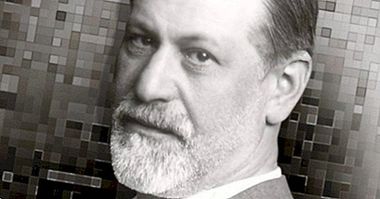Do we know each other as well as we think?
Self-knowledge is one of the abilities of the human being that is defined by the ability to determine all those aspects that make up the essence of the individual, configuring their identity, their needs and concerns, as well as explaining the type of reasoning and of reactions that the person sets in motion in a certain situation.
The ability to self-observe allows the possibility of predicting one's behavior in a general way and approximates the individual to form a global idea of "who is" and "how is" . However, knowing oneself is not as simple as it may seem.
- Related article: "Self-concept: what is it and how is it formed?"
Why is it difficult for us to develop self-knowledge?
Contrary to a widespread idea about the ease that the human being has to be able to define himself in an objective way, the latest scientific findings seem to indicate the opposite .
Next we see the diverse explanations that the investigations realized on the matter have used to help us to understand why it costs us to know us.
1. Alteration of the perspective to the discrepancy
Several studies seem to conclude that the human being tends to confuse the degree of objectivity with the one that makes judgments about one's own behavior . With the aim of preserving a positive self-image, people tend to be benevolent about what we think about ourselves and, in addition, we are not aware of the subjectivity and bias with which we interpret our attitudes or our behaviors.
In this way, we observe more easily a certain error if it is committed by a third party than if we made that mistake ourselves. In short, it seems that the capacity for introspection is an illusion, since is distorted through unconscious processes .
This was demonstrated by Pronin and his team at Princeton University (2014) with various samples of experimental subjects in which they were required to value their own and other people's behavior in different tasks: in the experimental situation, the probands were still described as impartial. when they had to make judgments and criticisms about various aspects of the proposed task.
Also, this does not occur in subjects who have experienced an aversive event in childhood, which has led to the development of an insecure operation based on a negative self-assessment.
According to the "theory of self-affirmation", people with low self-esteem aim to offer others a damaging image of themselves with the aim that this is coherent and reaffirm the self-image that they themselves possess of their person. This is related to the contributions proposed by Festinger (1957) on "cognitive dissonance", by which the degree of discrepancy between one's attitude and behavior produces such discomfort that the individual tends to strive to minimize it through different strategies, either changing their behavior or modifying the beliefs on which their attitude is based.
On the other hand, Dunning and Kruger's studies in 2000 gave rise to a theoretical approach that they called "Dunning-Kruger Effect" from which the greater the incompetence of a person, the lower is his capacity to realize it. According to this research, only 29% correspondence between the correct self-perception of the intellectual capacity and the real value obtained in the individual IQ (Intellectual Coefficient) was achieved for the subjects who participated in the experimental situation.
In other words, it seems that once again, in order to maintain a positive self-image, the "negative" characteristics or traits tend to be ignored significantly. Related to this last question, another team of researchers has found more recently that people who have a moderate positive image (and not exaggerated, as indicated above) tend to present a higher level of well-being and high cognitive performance in specific tasks.
- Maybe you're interested: "Dunning-Kruger effect, the less we know, the smarter we believe"
2. Tests to assess personality traits
Traditionally in some areas of psychology have been using so-called implicit or covert techniques to define personality traits, such as projective test or implicit association test type TAT (Thematic Appraisal Test).
The basis of this type of evidence resides in its unreflective or rationed nature , since those features or characteristics expressed in a reflex or automatic way seem to be more revealing about the subject itself, where there is no possible alteration influenced by the more reflexive or rational analysis that other self-report or questionnaire tests can provide.
Science has recently found a nuance in this regard, arguing that not all personality traits are objectively reflected implicitly, but appear to be the facets that measure extroversion or sociability and neuroticism the aspects that are best measured by this type of techniques. This is explained by the Mitja Back team at the University of Münster, because these two traits are related more to automatic impulse impulses or to desire responses.
On the contrary, the features of responsibility and openness to experience are usually measured more reliably through self-reports and more explicit tests, since these latter features are within the area of the intellectual or the cognitive, and not the emotional as in the previous case.
3. Search for stability in a changing environment
As stated above, the human being tends to self-deceive to achieve a state of coherence with respect to one's identity. An explanation of the motivations that lead the individual to adopt this type of functioning is related to maintaining a core of stability (their own identity) in the changing and changing environment that surrounds them.
Thus, an adaptive resource as a species resides in maintaining self-perception in such social contexts in order that the external image offered coincides with the internal one. Apparently, experts conclude that the perception of one's character as a rigid, immutable and static phenomenon provides security to the individual and facilitates the ability to orient oneself with a minimum of order within an uncertain context such as the outside world.
However, a rigid operation It is often associated with a low capacity to tolerate uncertainty and frustration , which is generated when reality differs from personal expectations, leading all of this to an increase in emotional distress. In short, under the pretext of providing itself with a greater degree of security and well-being, the current human being is achieving precisely the opposite effect: an increase in one's own worries and the level of anxiety.
As last point, what is indicated above adds a nuance to the so-called "Self-fulfilling Prophecy, according to which people are inclined to behave according to the image they present about themselves . The nuance lies in considering that the application of this theoretical principle takes place when the trait is variable, but not when it is static.
Thus, according to what was found by Carol Dweck (2017) in a study conducted by Stanford University in California, faced with innate personal characteristics (such as willpower or intelligence), the inverted motivation to reinforce it is lower than before changing traits (for example as it usually happens with one's own weaknesses).
The benefits of meditation and Mindfulness
Erika Carlson studied the relationship between the usual meditation practice in mindfulness and the ability to be objective in the assessment of one's own person, finding a positive correlation between both elements.
Apparently, this type of practice allows you to take distance from yourself and of the own cognitions to be able to analyze more rationally the characteristics and features that conform the "I" of an individual, since they allow the subject to detach from said thoughts and messages, assuming that he can let them pass without identifying with them to simply observe them without judging them.
conclusion
The preceding lines have shown that the human being tends to alter the image that he has of himself as a defense mechanism or "survival" with respect to the demands of the environment in which he interacts. The contributions of the theories of cognitive dissonance, the Self-fulfilled Prophecy, the Dunning-Kruger Effect, etc., are just some phenomena that show the scant objectivity with which individuals elaborate the definition of their own identity.
Bibliographic references:
- Ayan, S. The essence of the self. In Mind and Brain. Vol 92 (2018), pp. 31-39.
- Brookings, J. B., & Serratelli, A. J. (2006). Positive illusions: Positively correlated with subjective well-being, negatively correlated with a measure of personal growth. In Psychological Reports, 98 (2), 407-413.
- Hansen K., Gerbasi M., Todorov A., Kruse E., and Pronin E. People Claim Objective After Knowingly Using Biased Strategies Personality and Social Psychology Bulletin. Vol 40, Issue 6, pp. 691 - 699. First Published February 21, 2014.
- Pronin, E. (2009). The introspection illusion. In Advances in experimental social psychology, 41, 1-67.



















